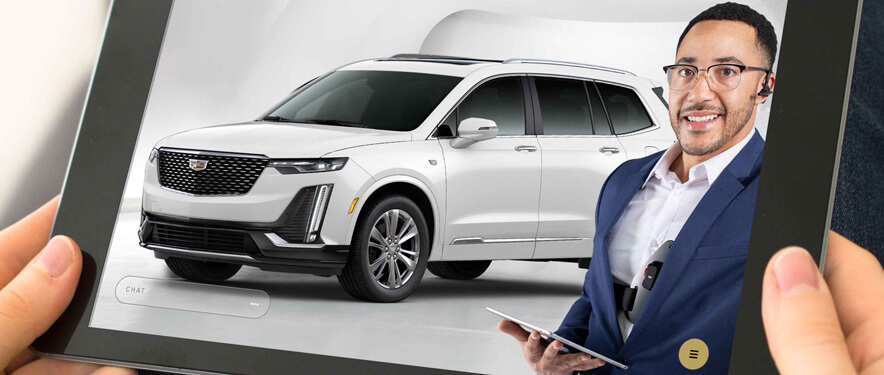- Home
- Financial Resources
- Financial Articles
- A Step-by-Step Guide to Auto Financing

A Step-by-Step Guide to Auto Financing
By Katrina Lewis / 02/01/2024 / Auto Financing
That new car smell. A spotless interior. The upgraded technology. The independence of having your own transportation. Considering some of the things that come with new car ownership, it’s easy to see why many mark buying their first vehicle as an exciting milestone. For a first-time buyer however, figuring out auto financing could become overwhelming.
Before you submit a credit application or head to the dealership, use this guide to confidently move forward in the process.
A to-do list for a first-time buyer
Buying a new vehicle can be a large financial commitment. So take some time to get familiar with a few “need-to-knows” before heading to the dealership.
Research your ride
Selecting the vehicle that fits your personality and your lifestyle is important, and you’ll want to have a good idea of what you’re looking for prior to a dealership visit. This helps you stay focused on what you’re really after and avoid impulse buying.
With so many options, what kind of vehicle do you see yourself driving? Are there certain safety or entertainment features you’d like to have? Should you lease or buy? Is an electric vehicle (EV) a consideration for you?
To help guide your search, consider your hobbies, commuting distance, available charging stations (if you’re considering an EV), the number of passengers you typically have and even local weather conditions.
Understand how credit works
Your credit score is used as a measure of your creditworthiness. This is how likely you are to make payments in a timely and consistent matter.
Credit scores are monitored by three major credit reporting agencies: Equifax, TransUnion and Experian. Finance companies check your credit score from one or more agencies, collecting information about your borrowing and payment habits. Your credit history is compiled, and each credit bureau creates a score that helps finance companies determine your credit risk; credit scores range from 350 to 850.
Typically, the higher your credit score, the better financing options you will receive. Though there could be instances where a person with limited credit history (like a first-time buyer) may have a higher credit score, finance companies usually view first-time car buyers as high risk for financing.
Because of this, take some time to explore any first-time buyer programs offered by finance companies and automakers. You can also possibly find someone who is willing to be a co-signer or co-buyer on your financing contract.
Save for a down payment
A down payment is money you pay toward the cost of the vehicle. It reduces the amount you owe and often serves as a “good faith” gesture to show finance companies you are a serious buyer. It also impacts your interest rate, monthly payment and may be required for your credit approval as a first-time buyer. The larger your down payment, the less you are financing. This means you pay less interest over the course of your contract.
There is a general rule of thumb that a down payment should be at least 20% of the vehicle’s purchase price. But this may not be required by your finance company or dealership. Some finance companies may only require 10% or a specific dollar amount.
Calculate your total cost ownership
Owning a vehicle comes with obvious expenses like the monthly payment, fuel, routine maintenance or maybe even an EV charging station for your home. But there are other costs to owning a vehicle to factor in when considering how much car you can afford. These combined costs are collectively referred to as the total cost of ownership.
Total cost of ownership includes registration fees, taxes, and insurance. If your vehicle needs specialty items like snow tires, you should calculate “one-offs” like those as well, as they may impact your annual expenses. You may also want to consider any annual or monthly memberships, like auto emergency services or detailing services.
Start your financing journey
You’ve finished your research and are feeling good about the car you want to buy. Now comes the time to apply for auto financing.
Look closely at finance companies
When you need auto financing, it’s either a direct or indirect lender that provides it.
A direct lender is more of a traditional financial institution like a bank or credit union. They loan directly to the buyer with no middle party. An indirect lender purchases retail installment contracts from auto dealerships.
There are also captive auto finance companies. These are owned by manufacturers or retailers and offer financing options for specific vehicle makes. The benefit to using them for auto financing is that they can offer exclusive special offers and incentives.
Explore prequalification options
Prequalifying means a finance company has tentatively approved you for financing. This will often include the value of the vehicle and an estimated interest rate. Many finance companies allow you to see if you prequalify with no impact to your credit score. That is a good thing because credit applications can sometimes lower your credit score.
Prequalifying can help you determine your best financing option. If you choose to accept a prequalifying offer, gather all necessary paperwork and copies of anything that your financial company requests. This could be your drivers’ license, payment stubs, proof of insurance, bank statements and more.
If you are not initially approved for financing, you can reach out to the finance company to ask why your preapproval was denied. You can also have the dealership submit your financing information directly to finance companies it partners with in the case of denial.
Know your terms
Purchasing a new car introduces the perfect time to familiarize yourself with auto financing terms you may hear along your journey. Though these few are just a start, knowing them can be a confidence booster once you’re provided with the details and available options of your deal.
- Annual percentage rate (APR)
Annual percentage rate is the total cost of credit – including the interest rate and other charges – expressed as a yearly rate. - Extended warranty
An optional service contract that goes beyond the standard manufacturer warranty to cover certain repairs and services. Sometimes called a “vehicle service contract,” this contract can be purchased at any time. - Guaranteed Asset Protection (GAP)
GAP coverage can provide added financial protection if your vehicle is declared a total loss. In that event, GAP can help by waiving some or all of the difference between the amount owed on your retail installment contract and the amount your insurance pays, including your deductible. - Lienholder
In auto finance, a lienholder generally refers to the source that provides financing for you to purchase a vehicle. If you don’t make payments, the lienholder may take possession of your vehicle and sell it to help pay your debt.
Get ready to ride
At this point, you’ve secured your financing and have made time to take a test drive. Now, it’s time to get down to the fine print of your contract agreement.
Contract agreements differ, depending on if you’re buying or leasing your new vehicle. Though they will differ based on your finance company (and you should review yours in detail), there are several standard sections. They include details on your payment amount, payment date, term length, who to address payments to and any penalties that may arise from late payments. There will be details on any GAP coverage or other service contracts you have chosen to purchase as well.
On a lease agreement, you’ll see specific fees that don’t apply to a retail contract agreement. There are a few to take note of:
- Disposition Fee
This is a flat-rate fee charged to lessees after returning their vehicle to cover the cost of preparing it for resale. You might find this listed under a section like “Other Charges.” GM Financial may waive your disposition fee if you choose to lease or buy another GM vehicle or purchase your current vehicle at the end of your lease. Check your contract for details. - Excess Wear
Standards outlining what is considered excess wear are listed in your lease agreement. Any wear to the vehicle that is not excessive is considered acceptable. One of the best ways to determine what excess charges may be is to schedule a pre-return inspection at your dealership or home. - Limitations or Restrictions
This section of the lease agreement may include an explanation of excess wear, early termination or the number of miles you can drive your vehicle without paying an extra charge.
Buying (or leasing) a car for the first time might be emotional. Empowering yourself with focused research on your vehicle, knowledge of the financing process and understanding your contract can replace the nervousness with the pure joy of a major accomplishment.
Want to prepare yourself even more? Check out our Payment Calculator and Affordability Calculator to estimate what your payments could look like and just how much car you can comfortably afford. You can also explore our current offers to see if you qualify for any special pricing or discounts.
By Katrina Lewis, GM Financial
A fan of suspense novels, food trucks and pop culture, Katrina Lewis is passionate about writing to educate and inform, especially when it comes to finances and customer options when leases or contracts are ending. A “boy mom,” Katrina loves playing monster trucks with her son, random day trips and venturing out to various festivals with her family.
Related Articles

Am I A Qualified Buyer?
You know the term, but what does it really mean? Let’s help break it down.
LEARN MORE
5 Ways Auto Financing Can Impact Your Credit Score
Your credit score is a key to healthy financial living. If done responsibly, auto financing may help you build a stronger credit profile.
LEARN MORE